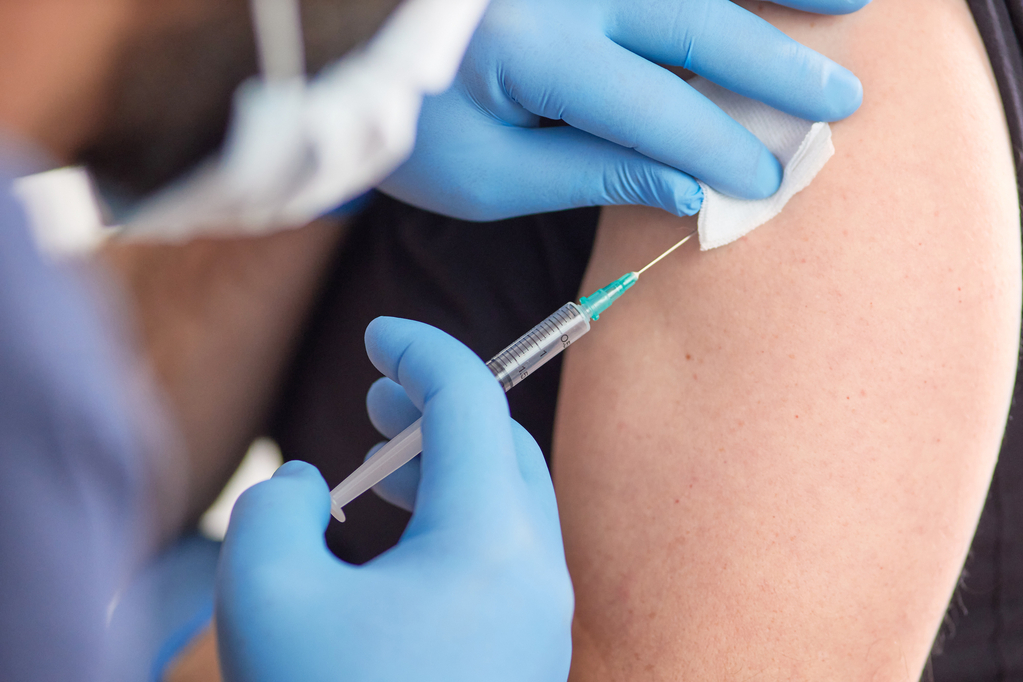EU’s approach to global vaccine solidarity is based on a combination of vaccination in member states and exports and donations to rest of the world, according to senior officials.
The approach and its technical and moral challenges were outlined at a press briefing on Wednesday (8 December) after European Commission President Ursula von der Leyen earlier this week issued a statement with a few figures on vaccine sharing.
“The EU is so far the biggest donor of COVID-19 vaccines in the world,” she asserted. “Our EU member states have shared more than 350 million doses for donation to countries around the world. The large majority, around 300 million doses, have been shared via COVAX (the WHO-led initiative to ensure global equitable access to COVID-19 vaccines).”
“In addition, our EU Member States have delivered over 45 million doses through bilateral donations – for instance to our neighbours in the Western Balkans. So, altogether, around 350 million doses have been shared by Team Europe." We will only control this pandemic if we fight it in every corner of the world, she concluded.
COVAX aims at vaccinating 40 % of the population of every country by the end of this year and 70 % by the middle of next year. At this point, 44% of the world population is vaccinated but there are huge disparities within countries and between continents.
The EU is leading with a vaccination rate of 67 % (Europe as a whole with 58 %). Other continents have also achieved vaccination rates of at least 50 %. The divide is between Africa, where the vaccination rate is only 7 %, and the rest of the world.
The global picture is mixed, according to an EU official. EU may be doing more than other world powers, at least via donations to COVAX, but faces also challenges in actually delivering the vaccine doses to other countries. EU aims at sharing 700 million doses directly or through COVAX by mid-2022.
By early December 2021, member states had shared 353.4 million doses but only 118 million doses had actually been delivered. Out of them, 45.2 million doses were delivered to recipient countries by member states through bilateral donations. In total, about 40 million doses were delivered to Africa. Doses are delivered with technical assistance.
Why is there is such a difference between shared and delivered doses? According to the Commission experts, COVAX needs first to identify countries that are ready to receive the doses. In some countries, even regulatory approval of the vaccine might still be missing. The Commission hopes that it will deliver the vaccine doses by February next year when the EU-Africa Union summit will take place.
It also admitted that there had been issues with short shelf life but this could also happen in the member states.
The Commission has also managed to commit vaccine manufacturers to sell vaccines to low-and medium countries at low prices. They have committed to sell 1.5 billion doses at no profit this year.
EU is producing more vaccine doses than needed to protect its own population, including booster vaccination, and regards export as an element of international solidarity. The main tool for sharing doses is export and the EU has been a vaccine trade partner from the very beginning of the pandemic. Until now 1,4 billion doses have been exported to 150 countries based on market principles.
The EU aims also at supporting other countries in building capacity for vaccine production, especially in Africa but the discussions on this are still on-going. Does this include temporary wavering of IP-rights to COVID-19 vaccines or alternatively compulsory licensing?
“We are actively engaging with the World Trade Organisation (WTO) on this,” an EU official replied, “but we need also to respect international agreements and not risk disrupting supply chains.” A Commission spokesperson said last week that the EU did not support wavering of IP-rights, among others because the need for incentives to innovation, and had proposed compulsory licensing instead.
According to WTO, compulsory licensing is when a government allows someone else to produce a patented product or process without the consent of the patent owner or plans to use the patent-protected invention itself. It is one of the flexibilities in the field of patent protection included in the WTO’s agreement on intellectual property — the TRIPS (Trade-Related Aspects of Intellectual Property Rights) Agreement.
M. Apelblat
The Brussels Times

